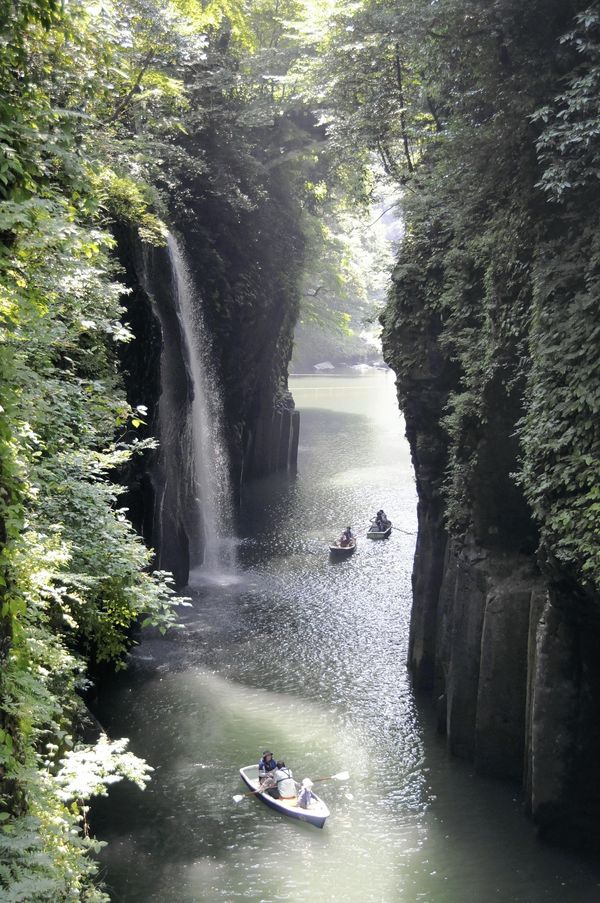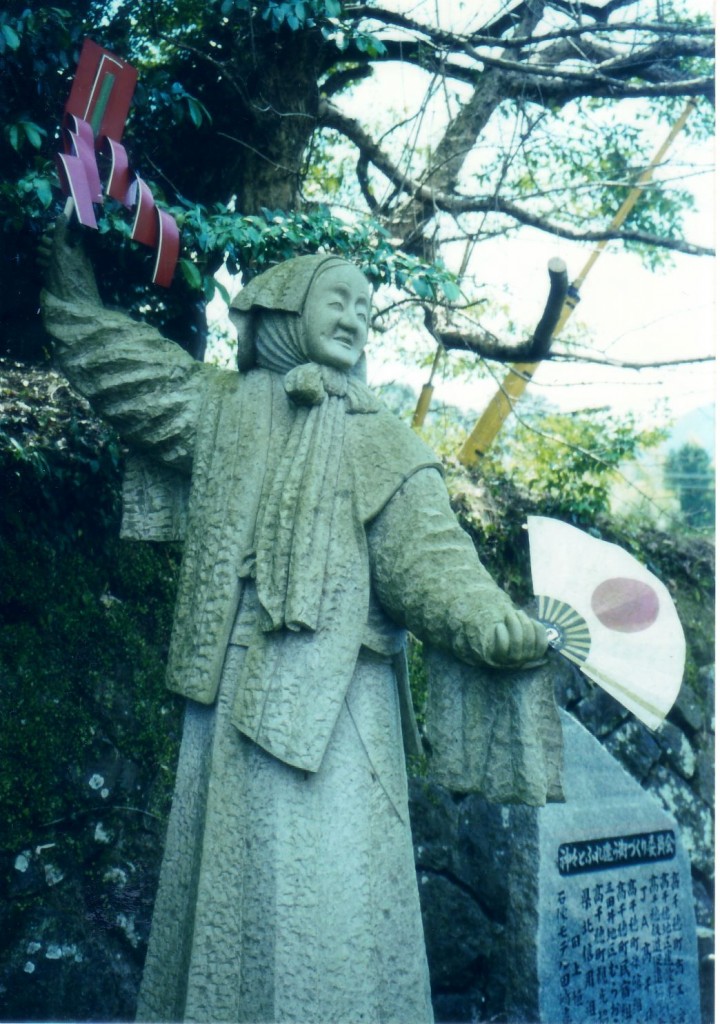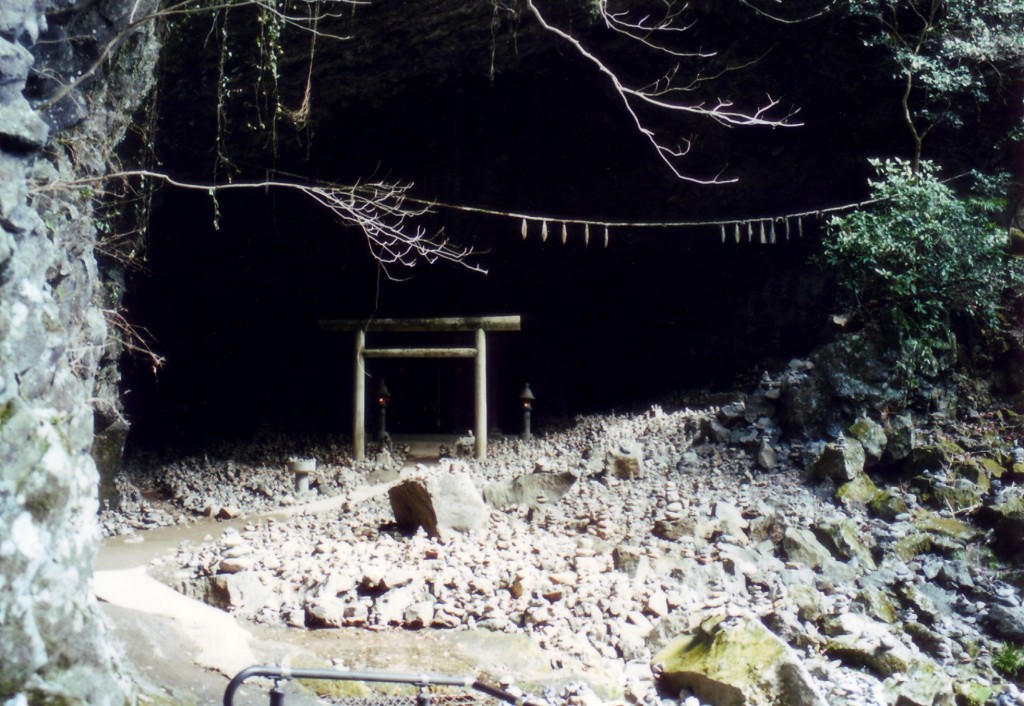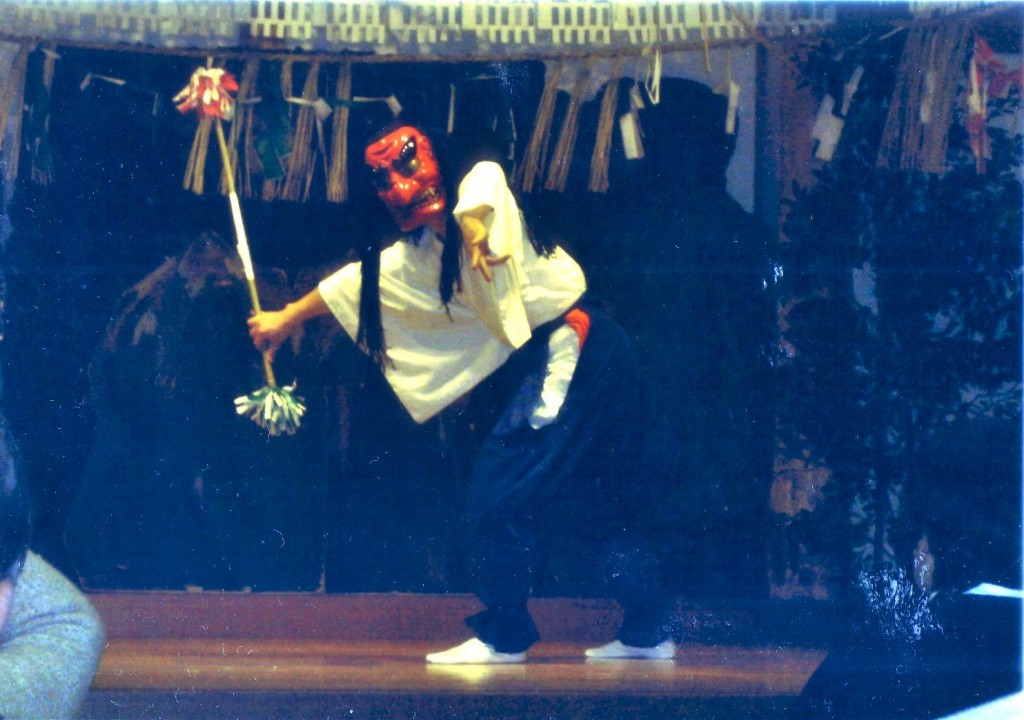An article in the Japan News today tells of the attractions of Kyushu’s Takachiho, which is associated with the Rock Cave myth in the Kojiki (712). There’s a curious coincidence (or perhaps it’s not coincidence) in that Takachiho is also the mountain in southern Kyushu onto which Amaterasu’s grandson Ninigi no mikoto descended in the Heavenly Descent (tenson korin).
I’ve visited the town of Takachiho myself, and it’s certainly well worth the effort of going there There are a number of attractions described in the full article, though the associations with the Kojiki myth described below are the most fascinating. In the evenings there are dramatic kagura reenactments of some of the episodes in the myths. The story of Izanami and Izanagi, I recall, was particularly lively and raunchy. One felt Chaucer would have approved.
**************************************************************************************
Mythical world: Takachiho boasts stunning scenery
The Japan News September 22, 2013 (by Takashi Oki, staff reporter)

Visitors row boats through the Takachiho Gorge. The Manai Waterfall is the top tourist spot. Sunlight shines though the dim gorge in the daytime.
Takachiho is steeped in mythology. Situated in a basin surrounded by mountains, the village has a mythical atmosphere and is believed to be the site of a number of legends set down in Kojiki (Record of Ancient Matters) and Nihonshoki (Chronicles of Japan).
“Thanks to a ‘spiritual site visits’ boom, many groups of women have visited the town recently,” said Hisao Kudo of Takachiho’s Planning and Tourism Division.
Kudo and his colleagues gave me a tour.
First, we went to the Takachiho Gorge by boat along the Gokasegawa river. Soon the Manai Waterfall appeared before me. The spray from the 17-meter waterfall was cool and refreshing. Rock faces flanked both sides of the river and the area was quite dark despite it being a sunny summer day.
“The scenery appears to come out of a mythical world, doesn’t it?” a man in a nearby boat exclaimed.
Several sites in Takachiho are associated with ancient lore, including the Ama no Iwato (heavenly rock cave), where sun goddess Amaterasu Omikami is said to have hidden; and the Takamagahara prayer site, where gods are believed to have bowed and worshipped the heavens (Takamagahara) after descending from that sphere. Takamagahara translates literally as high plain of heaven.

Ame no Uzume whose dance won the attention of the gods, drawing out a curious Amaterasu from her cave
Among the sites with mythological associations, I was particularly interested in Ama no Yasukawara, a large cave where thousands of gods are said to have gathered to discuss how to coax Amaterasu out of the Ama no Iwato.
I saw a big cave along the Iwatogawa river, with stones piled up along the riverbank in front of it. Legend has it that wishes are granted to people who pile stones up in front of the cave. I was deeply moved by the strength of people’s devotion.
I went back there on the morning of my departure. Summer sunlight trickled through the trees which almost lurched over the river below. The faint rays gave a glow to the shadows. The scenery was so sublime that I couldn’t help but make a wish of my own.
Travel tips
From Haneda Airport, it takes about 1 hour and 40 minutes to fly to Aso Kumamoto Airport. From there it takes about 2 hours to the Takachiho Bus Station by express bus. From Miyazaki Airport, it takes 70 minutes to Nobeoka, Miyazaki Prefecture, by express train. From there it takes about 1 hour to the Takachiho Bus Station by express bus. For more information, call the Takachiho Town Planning and Tourism Division at (0982) 73-1212.

Ama no Yasukawara: meeting place of the gods to consult about how to draw out Amaterasu from her cave


Leave a Reply